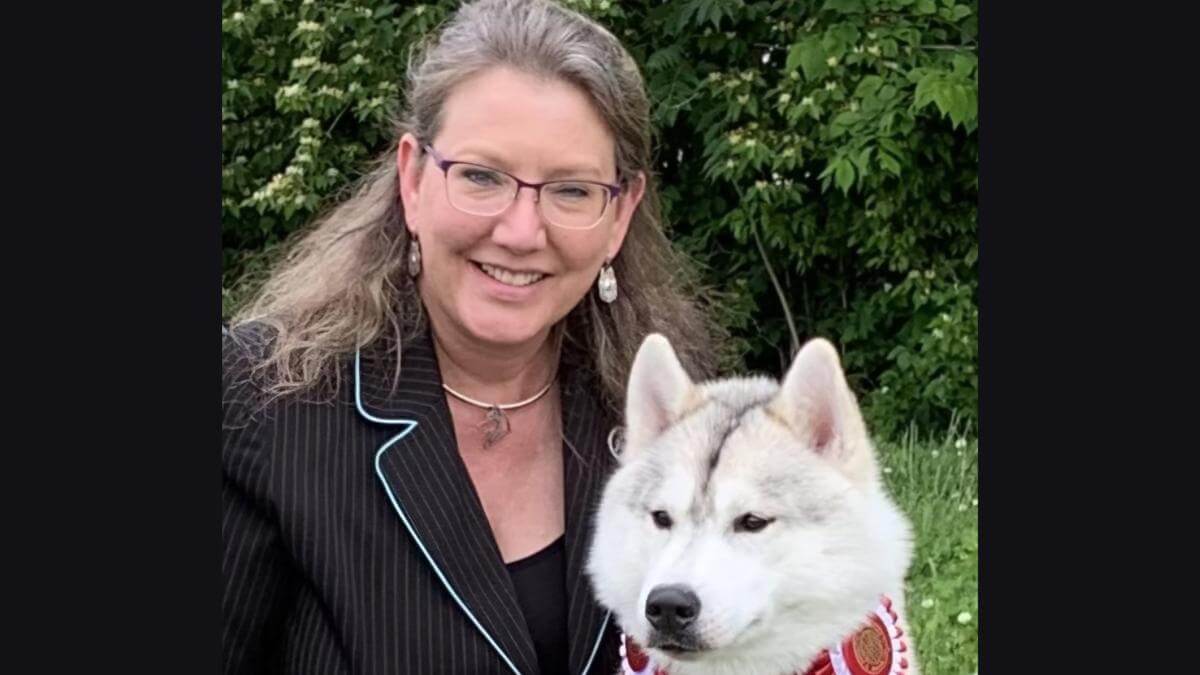


Home » Tami Bradford | Traxx Siberians

Tami Bradford
1. My name is Tami Bradford, and my husband, David, and I currently live in Knoxville, Tennessee. I have had dogs all my life, but Siberian Huskies came into my life thirty-five years ago, in 1990. My first dog was a rescue, from whom I learned a great deal about the breed. I purchased my first show dog in 1993 and bred my first litter in 1998. Our kennel name is Traxx Siberians.
While I’ve been involved with the breed for quite some time, we did not achieve much success in the Conformation ring until 2010. Since then, we have bred 15 champions, including multiple Group winners/placements, Top 10 in National Owner-Handled Series (NOHS) and Breed statistics, multiple Owner-Handled Bests in Show (OHBIS), multiple Bests in Specialty Show (BISS), and a National Specialty Award of Merit (AOM) winner—all breeder/owner-handled.
2. Siberian Huskies should be endurance athletes capable of pulling a light load over long distances in a harsh Arctic environment. Anything that detracts from their ability to perform this job diminishes breed type. The term “moderate” is frequently used in our Breed Standard, emphasizing that while Siberian Huskies are fast, they should not be racy, sprint animals, nor should they be draft animals.
3. Yes, I have had people waiting for a puppy for years. Since Siberian Huskies generally have four to six puppies on average per litter, this helps to manage demand. I do not breed every year, but I am planning to have a litter this year.
4. We have recently started using the Relaxin hormone blood test to confirm pregnancies and we test for the newly identified neurological disorders in our breed: Shaking Puppy Syndrome, Type 1 (SPS1) and Siberian Husky polyneuropathy (SHPN1). Those new disorders were genetically identified in just the last couple of years.
5. In my community, there is still a misunderstanding about purebred dogs. Too often, the public associates a “breed name” with being purebred. For instance, people might say, “It’s a goldendoodle,” as if that is a breed.
6. One trend I see in the sport is the lack of variety among judges. We often see the same faces every weekend. While clubs struggle to afford shows, hiring the same multi-Group judges can lead to a few individuals shaping a breed’s path. Many permit judges would love the opportunity to join the panels of larger clusters. Kudos to those show chairpersons who hire permit judges!
7. I have noticed that clubs are acknowledging the NOHS Groups as equal to the regular Groups, offering the same ribbons, trophies, and prizes for both. Additionally, I appreciate the Beginner Puppy Competition (BPUP) classes, as there are fewer matches nowadays. These events are invaluable for young puppies to acclimate to the show environment. Thanks, again, for the invite to contribute!